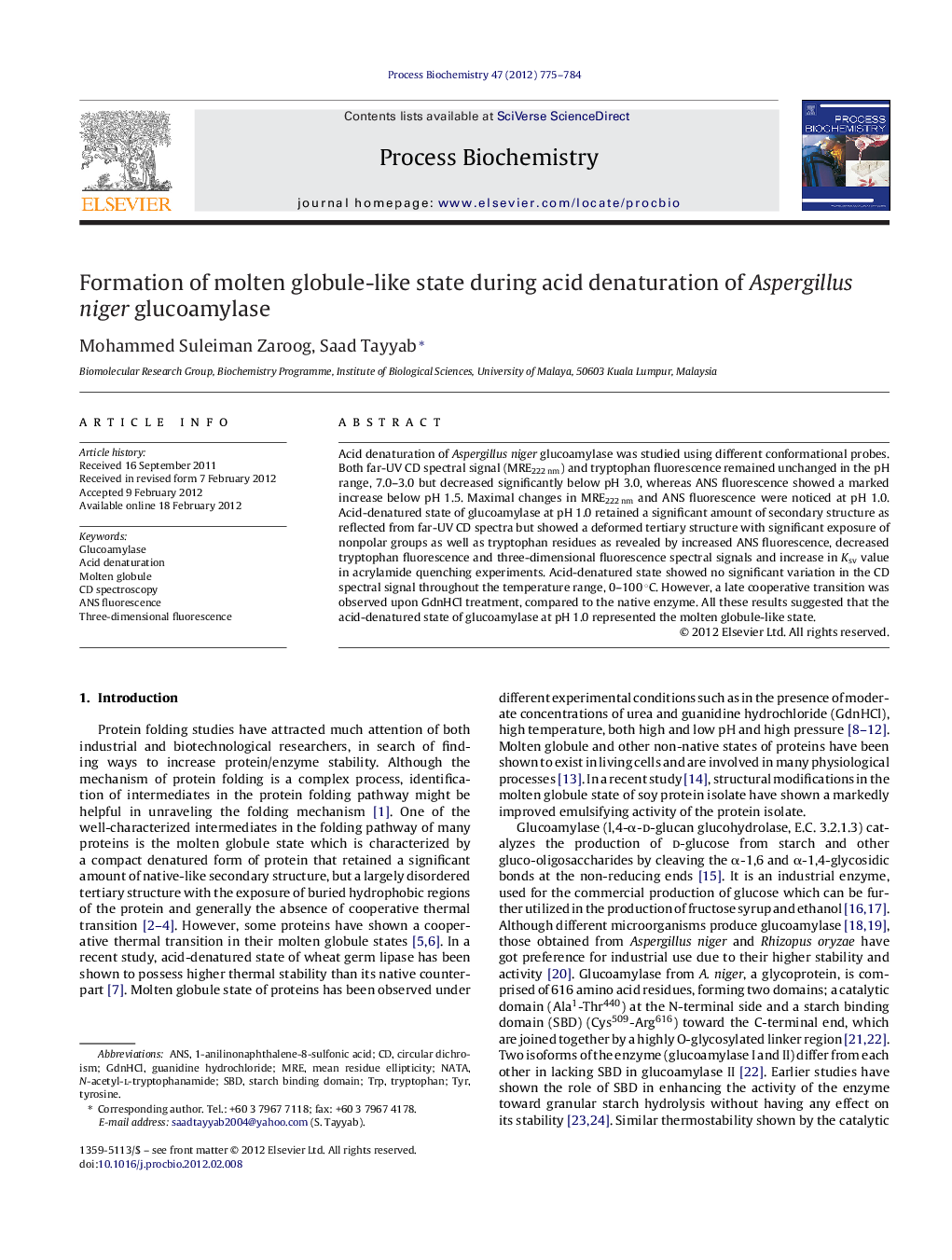| Article ID | Journal | Published Year | Pages | File Type |
|---|---|---|---|---|
| 34571 | Process Biochemistry | 2012 | 10 Pages |
Acid denaturation of Aspergillus niger glucoamylase was studied using different conformational probes. Both far-UV CD spectral signal (MRE222 nm) and tryptophan fluorescence remained unchanged in the pH range, 7.0–3.0 but decreased significantly below pH 3.0, whereas ANS fluorescence showed a marked increase below pH 1.5. Maximal changes in MRE222 nm and ANS fluorescence were noticed at pH 1.0. Acid-denatured state of glucoamylase at pH 1.0 retained a significant amount of secondary structure as reflected from far-UV CD spectra but showed a deformed tertiary structure with significant exposure of nonpolar groups as well as tryptophan residues as revealed by increased ANS fluorescence, decreased tryptophan fluorescence and three-dimensional fluorescence spectral signals and increase in Ksv value in acrylamide quenching experiments. Acid-denatured state showed no significant variation in the CD spectral signal throughout the temperature range, 0–100 °C. However, a late cooperative transition was observed upon GdnHCl treatment, compared to the native enzyme. All these results suggested that the acid-denatured state of glucoamylase at pH 1.0 represented the molten globule-like state.
► First report on the complete acid denaturation of Aspergillus niger glucoamylase. ► Characterization of molten globule state of the enzyme at pH 1.0 for the first time. ► Use of far-UV and near UV CD spectra, ANS fluorescence and intrinsic fluorescence. ► Thermal denaturation, acrylamide quenching and 3-D fluorescence studies.
